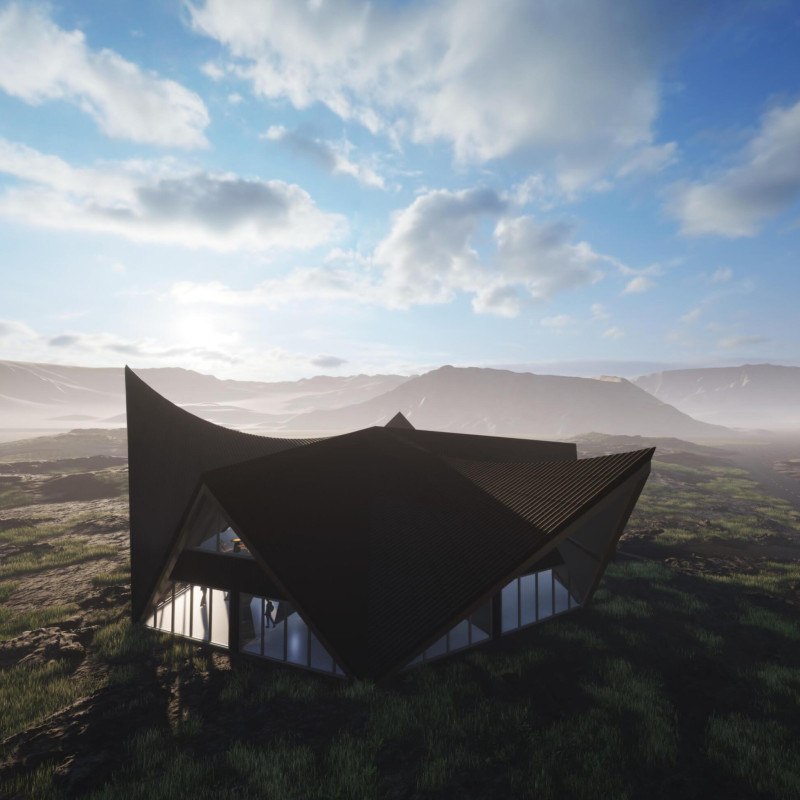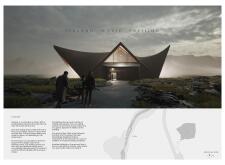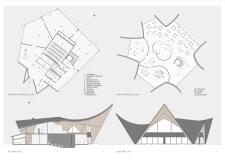5 key facts about this project
The Iceland Movie Pavilion is located in the breathtaking landscapes of Iceland. It draws on the country’s rich culture and history, reflecting the traditional tent structures used by the Vikings. This design emphasizes a close relationship with nature and serves a dual purpose of being a cultural landmark and an engaging space for visitors to explore Iceland’s cinematic past.
Design Concept
The pavilion’s shape resembles a tent, which connects it visually and contextually to its surroundings. This form helps it stand out in the landscape, making it easily identifiable. The design encourages visitors to approach and experience the space, positioning the building as a significant part of the local area.
Interior and Light
Large windows cover much of the facade, allowing natural light to enter the building. This connection between the inside and outside spaces creates a warm atmosphere that invites exploration. The beautiful landscape of Iceland becomes a living backdrop for visitors inside the pavilion, enhancing their experience.
Cultural Engagement
The ground floor functions as a key area that connects historical context to modern experiences. The layout includes forms inspired by caves, linking to ancient ways of living. A cinema on this level offers visitors a chance to learn about Iceland’s film history, creating a space for cultural engagement that complements the overall purpose of the pavilion.
Materiality and Sustainability
The design focuses on sustainable practices, notably using wood as the primary building material. This choice is consistent with ecological construction standards aimed at lowering environmental impact. While the specific details of the materials may not be fully outlined, the intention is clear: to create a building that fits well within its natural surroundings.
The pavilion ultimately demonstrates a thoughtful approach to architecture. It combines light, form, and practical use, all while respecting the cultural and environmental aspects of Iceland.






















































